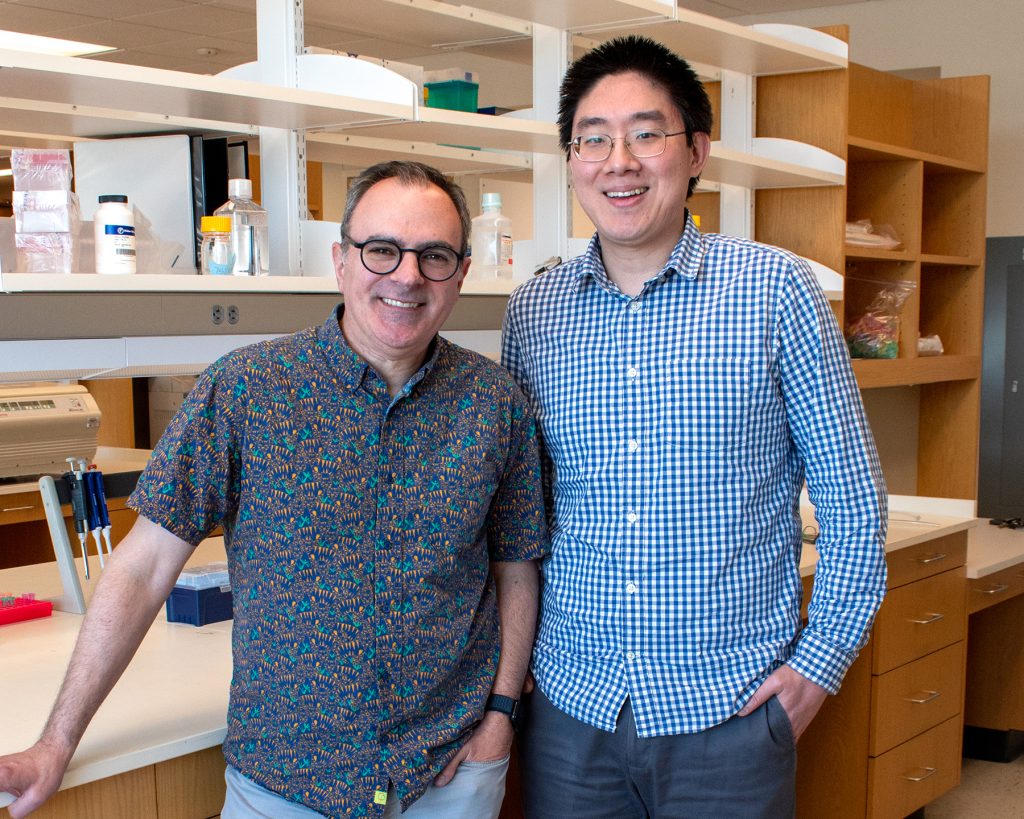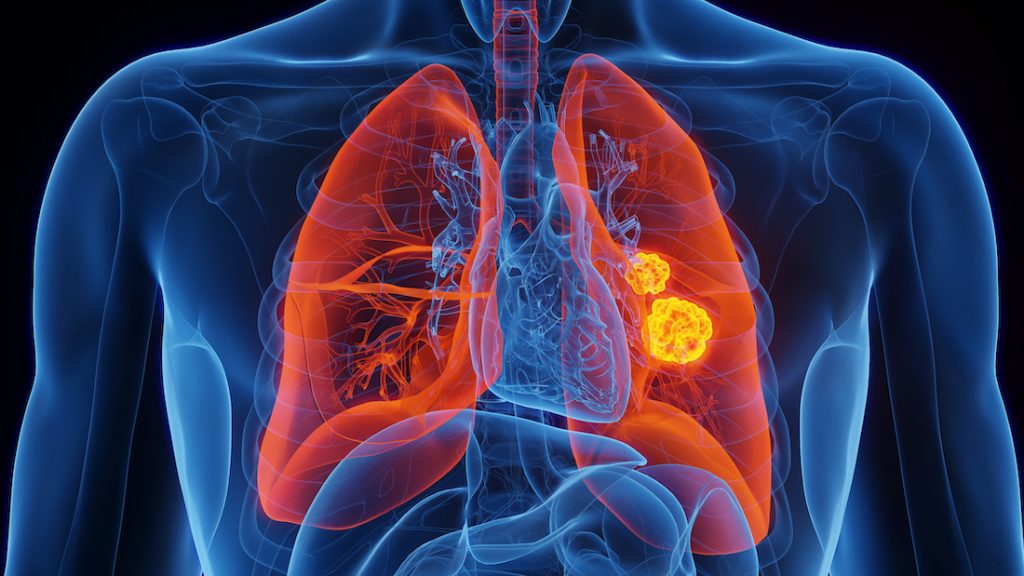
From left: Ralph DeBerardinis, M.D., Ph.D., Professor and Director of the Eugene McDermott Center for Human Growth and Development and Professor in CRI and of Pediatrics, and DeBerardinis Lab postdoctoral fellows Zheng Wu, Ph.D., and Phong Nguyen, Ph.D.
NUDT5 suppresses de novo purine biosynthesis through PPAT interaction, affects thiopurine sensitivity
The protein NUDT5 is a vital regulator of how cells build purine nucleotides, which may determine cancer treatment efficacy, according to new research from Children’s Medical Center Research Institute at UT Southwestern (CRI) published today in Science.
Purine nucleotides, the building blocks for DNA and RNA, are produced in two distinct pathways: de novo synthesis, which builds them from scratch, and salvage, where component molecules are recycled to produce new nucleotides. Both pathways are tightly regulated in cells to maintain healthy purine nucleotide levels.
CRI’s new research reports that NUDT5 suppresses de novo purine synthesis during purine salvage. The work was led by Ralph DeBerardinis, M.D., Ph.D., Professor and Director of the Eugene McDermott Center for Human Growth and Development and Professor in CRI and of Pediatrics, and DeBerardinis Lab postdoctoral fellows Zheng Wu, Ph.D., and Phong Nguyen, Ph.D.
“Activation of purine salvage inhibits de novo purine synthesis, preventing purine overproduction, which can lead to diseases such as gout,” Dr. Wu said. “We identified NUDT5 as a critical regulator that prevents the two pathways from being activated at the same time.”
NUDT5 was identified through a CRISPR screen to find genes involved in sensitivity to thiopurine chemotherapy. Thiopurines are structurally related to naturally occurring purines. They are not inherently toxic, Dr. Wu said, but purine salvage coverts them into toxic thiopurine nucleotides, which kill proliferating cells. This is why thiopurines are used to treat some cancers and inflammatory diseases.
Cells containing NUDT5 die when treated with thiopurines, but cells lacking NUDT5 are resistant. The CRI scientists discovered that NUDT5 binds to phosphoribosyl pyrophosphate amidotransferase (PPAT), a crucial enzyme in de novo purine synthesis. This binding allows thiopurine nucleotides to turn off de novo synthesis, which is part of how these drugs kill cancer cells.
“When NUDT5 doesn’t bind PPAT, de novo purine synthesis cannot be turned off,” said Dr. DeBerardinis, who is also a Howard Hughes Medical Institute Investigator and Director of the CRI Genetic and Metabolic Disease Program. “That’s good for cancer cells, because it allows them to resist thiopurine chemotherapy. But it may create problems in other situations by resulting in purine overproduction, which wastes energy and other metabolic resources.”
Other scientists, including Stefan Kubicek from the Austrian Academy of Sciences and Kilian Huber from the University of Oxford, and Alexis Jourdain from the University of Lausanne, are also reporting findings about NUDT5’s role in regulating purine metabolism.
The discovery builds on prior DeBerardinis research, where CRI researchers found that mitochondrial dysfunction causes a failure of the de novo pathway and forces cells to use purine salvage.
“The purine metabolic pathways have been known since the 1950s, but we’re still learning how they are switched on and off,” Dr. DeBerardinis said. “The more we know about how these pathways are regulated, the better we will be able to optimize treatments in cancer and other diseases.”
This research was funded by the National Institutes of Health, HHMI, The Moody Foundation, the Eugene McDermott Endowment for the Study of Human Growth and Development, and a Cancer Prevention and Institute of Texas Core Facilities Support Award.
Dr. DeBerardinis holds the Eugene McDermott Distinguished Chair for the Study of Human Growth and Development and the Philip O’Bryan Montgomery Jr., M.D., Distinguished Chair in Developmental Biology and is a Sowell Family Scholar in Medical Research.
About CRI
Children’s Medical Center Research Institute at UT Southwestern (CRI) is a joint venture of UT Southwestern Medical Center and Children’s Medical Center Dallas. CRI’s mission is to perform transformative biomedical research to better understand the biological basis of disease. Located in Dallas, Texas, CRI is home to interdisciplinary groups of scientists and physicians pursuing research at the interface of regenerative medicine, cancer biology, and metabolism — relentless discovery toward the treatments of tomorrow.
X/Twitter | Blue Sky | LinkedIn | Instagram | YouTube | Facebook



